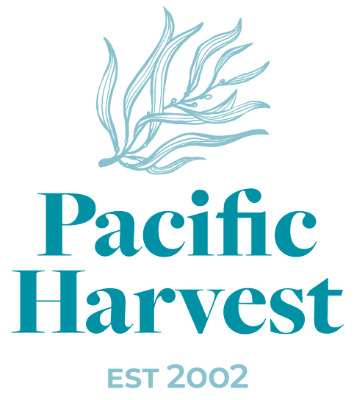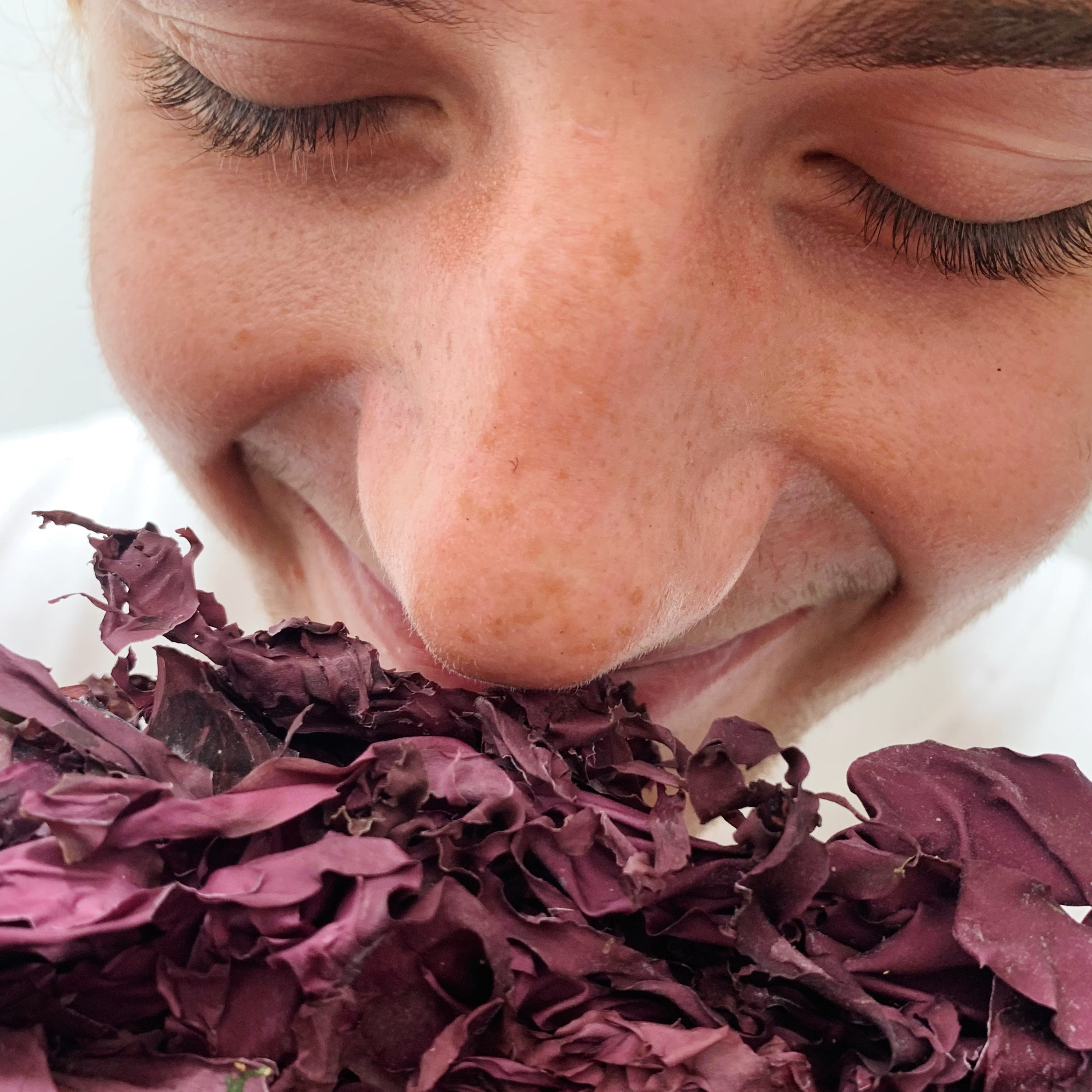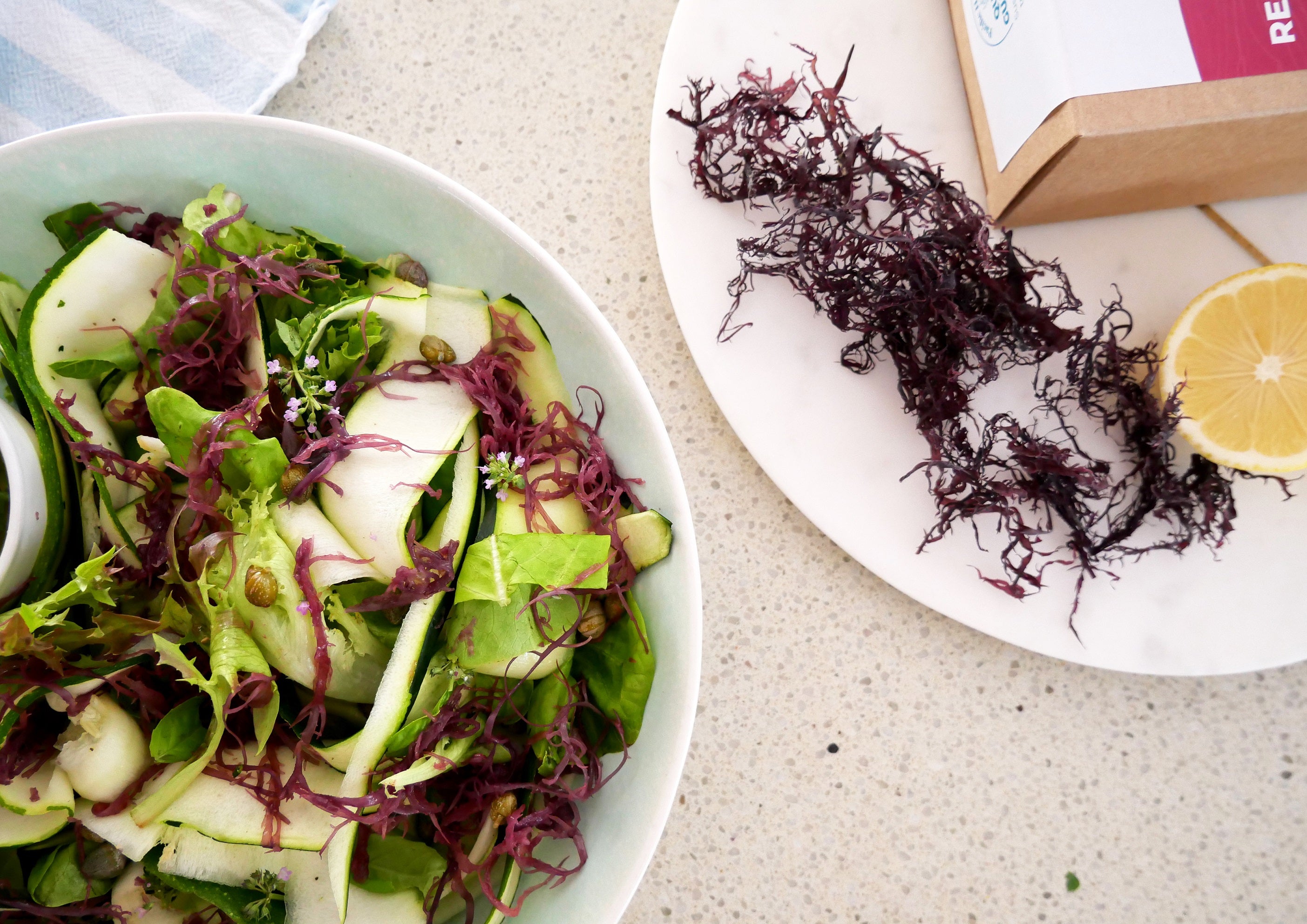Seaweed is the ocean’s equivalent of land plants, but seaweeds are technically classified as algae. There are some similarities but also crucial differences between them to note.
Seaweeds vs land plants - same but different.
Seaweeds can be categorised into single cellular (microscopic phytoplankton, which lives suspended in the water column) or multicellular algae (what we know as seaweed - visible to the human eye). Some seaweeds are fragile, small, and delicate. Whereas others are enormous such as giant kelp, which can grow to over 50m in abundant underwater kelp forests. Most seaweeds are medium-sized and are classified into 3 colour groups: red, green and brown, according to their pigment.
There are thousands of different species of seaweed under the world's oceans – many of which we still know little about. There are vast differences between each seaweed type regarding look, feel, texture, and use. We may only appreciate the incredible ocean biodiversity if we have spent time snorkelling or scuba diving.
Different seaweed types grow at different latitudes, and to varying ocean depths like other land, plants grow in the tropics vs temperate zones and altitudes (coast vs mountains). Generally, seaweeds are not flowering plants, but like land plants, they contain chlorophyll and rely on photosynthesis to produce the food they need to survive. These ocean plants we know as seaweeds lack ‘true’ stems, roots, leaves, and vascular tissue. You’ll hear us refer to stipes (branches), blades or fronds (leaves), and holdfasts (roots) when we reference different parts of each plant.

They have different physiology and chemistry to land plants and are uniquely adapted to survive conditions in the wild and changing oceans in which they thrive. For example, some seaweeds have a gas bladder that helps them navigate towards the sunlight they need to survive. They are tenacious, flexible, and fascinating sea plants!

Seaweeds are more nutrient dense than land plants.
Where land plants rely on a root structure to absorb minerals and nutrients (from increasingly depleted soils), seaweeds do not rely on roots to absorb what they need from the ocean around them. Some hold fast, helping them attach themselves to a structure (rock/reef/jetty) and ensure they are not swept into unfavourable conditions by tides. However, they use their entire surface area to absorb the abundant and complete nutrients available in the ocean. Due to this, their nutrient profile can be up to 20x denser than land plants.
Seaweeds ~ the ocean’s sea vegetable equivalent.
The name “seaweed” is a misnomer because a ‘weed’ is often regarded as a plant that spreads profusely and can harm the habitat where it takes hold. More recently, as the benefits of seaweeds are better understood, they are often referred to as ‘sea vegetables’ or ‘ocean vegetables’. These plant-based offerings from our oceans:
- are well regarded as offering the best natural source of iodine (& essential co-factors). Iodine is not available from land-grown plants.
- Are much more concentrated in nutrients than land plants. Offer all five essential nutritional elements necessary to a healthy diet: protein, carbs, fat (albeit extremely low), chelated minerals, vitamins (including B12), and prebiotic fibre.
- Have unique compounds that are being studied for their superb health-giving properties.
- Are at the extreme on the alkaline food scale.
In summary, while seaweeds are regarded as the ocean’s plant offering, they differ from land plants in many ways - both physically and chemically.
Read more about the impact seaweeds have on style human health and planet health.



